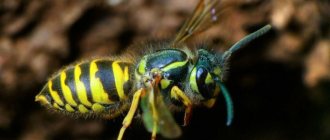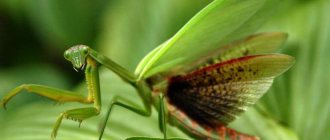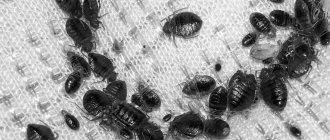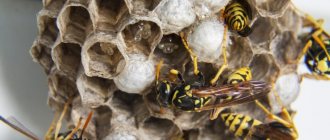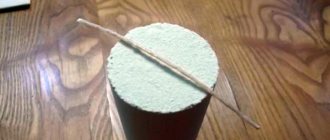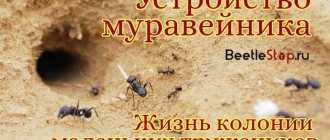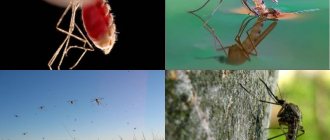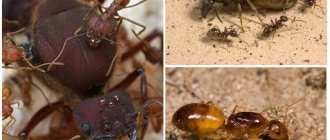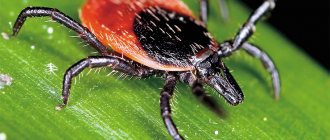- Lifespan of wasps
- Lifespan
- Uterus
- Working individual
- Males
- Why are wasps needed in nature?
- Benefits from insects
- Wintering places
- What happens if you kill a queen wasp?
- Wasp venom
Lifespan of wasps
How long wasps live usually depends on many factors, but most of all on their hierarchical arrangement in families. Working individuals, as a rule, die the fastest; the life cycle of the queen lasts longer.
The presence of alternating black and yellow stripes along the body is a distinctive feature of wasps. Insects also have membranous wings, antennae, which are also considered respiratory organs, and powerful jaws. Depending on the variety, the dimensions may vary, for example, for a burrowing wasp, a normal length is considered to be from 5 to 20 mm, for a scolius - from 10 to 100 mm.
Wasp
The presence of poison in these insects is indicated by their bright colors. The sting is an ovipositor with a modified appearance, considered characteristic only of females, they are the ones who are able to attack.
Wasps have never been long-lived. Their life depends on many factors related to the environment and the species. Social families of wasps live according to an internal hierarchy, which affects not only the distribution of responsibilities, but also the period of life. Each individual in the family performs its own functions and is distinguished by its significance. Within families, the following types are distinguished:
- queen - manages the colony and lays eggs to raise offspring;
- females that are unable to lay eggs are considered worker wasps;
- females that can conceive offspring at certain times of the season.
Polista, or paper wasps, are considered popular representatives of the subfamily. Spring is the time for the young queen to find a nest and begin building it. To build a place for offspring, chewed grass and tree bark are used. When summer comes, the first offspring of working insects are born, which resemble the queen, but are smaller in size. Such a brood can live up to two months. Towards mid-September, individuals appear in special cells whose reproduction is capable of producing young wasps.
Polista or paper wasp
When it gets cold and winter comes, the males begin to leave the nests and die. In general, they are able to live up to 3 months. Queens overwinter under the bark of trees, in crevices and grassy debris. Thus, the lifespan of a wasp can extend up to 4 years. In general, the wasp’s life period is associated with warmth, since only certain members of the family are able to survive the winter in frosty conditions.
How long can insects live without food?
Under certain circumstances, wasps can live without food for several months. With the onset of cold weather, males and workers freeze, fertilized females - queens - hide in wooden cracks, under bark, and old hollows. Metabolic processes slow down, the insect stops moving and spending energy. The wasp lives in this state from November to April. It emerges from the state of suspended animation with the first warm days.
During the active season, the common wasp constantly needs food and replenishment of energy reserves. Food for adults is plant nectar, juices of ripe berries, fruits, vegetables, and bee honey. And also lemonade, jam, sugar, kvass, beer, syrup. Wasps live without food for no more than one day, but leaving an insect without food is quite difficult. In an apartment in unnatural conditions, but with food available, the wasp will live for several days, but at the first opportunity it will fly outside.
Wasps
On especially difficult days, adults are fed by larvae. They regurgitate a special secretion, which the imago licks off. Food for the offspring can be kept in the nest in special chambers in reserve or for “rainy days.”
Interesting!
Burrowing, sand, and earthen wasps provide their larvae with food until the full development cycle. They paralyze the victim with poison - spiders, beetle larvae, butterflies, and lay eggs on their body. Locked in a hole. After a few days, a larva appears and devours the victim alive within 14 days. The larva overwinters in the cocoon state; in the spring, a young individual emerges to the surface, ready for mating and procreation.
Lifespan
Various representatives of the wasp family can live from a couple of months to several years. Species and external natural factors influence how long wasps live. Wasps are conventionally divided into solitary and social; their life spans are different.
Social ones live in a strict hierarchical system, like bees. Singles lead an isolated existence.
Uterus
The long-lived female among social wasps of all species lives for several years. All summer, the queen actively replenishes the population of the nest, continuously laying eggs. Towards the end of August, new, large cells for special offspring appear in the nest. From these cells young females and males hatch.
Before the onset of cold weather, they mate, after which the males die, and the future mothers of the family look for a place to winter. Females hide under bark, remnants of grass, and leaves. How many years the queen will live depends on a well-chosen location. Smart and lucky ones will survive 3-4 winters.
Working individual
Workers are the main population of a wasp hive, females who are not capable of reproduction. The working individual lives for about two months, the composition is constantly updated due to the continuous work of the uterus. By the end of summer, construction is no longer required; the worker wasps have completed their function. They restore order in their summer residence by eating larvae that have not yet been born.
After the act of cannibalism they set off on a journey. With the onset of the first frost, everyone dies. There are theoretical data according to which the queen of some species of the wasp family leaves the nest, dying along with the workers.
Males
In the tough wasp matriarchy, males are not particularly favored. They are born to fertilize females at the very end of summer; with cold weather, certain death awaits them. The lifespan of a male is about a month, with a maximum of 40 days. It all depends on the time of frost.
Species dependent
Solitary species do not live more than six months. All summer the female is active. She lays eggs and obtains food for herself and the larvae. Some species of solitary road wasps lead a “thieving” lifestyle, stealing the prey of their sisters for their own offspring. When the cold comes, both females and males die. New wasps will emerge from their burrows only in the spring.
The lifespan of social species depends on gender and external factors. Life expectancy data by gender:
- working females live 2 months
- drones – 40 days
- uterus – 1-4 years
Why are wasps needed in nature?
Wasps, unlike their striped relatives, have not received enough respect from people. This is largely due to the fact that few people know what wasps are needed for in nature, because they do not produce honey, sting and even cause allergic reactions. It is quite logical that the question arises what wasps do, and whether they have any benefit for people and the environment.
Benefits from insects
What benefits do wasps bring:
- They destroy small bugs. The adult feeds on nectars and fruit juices. The wasp larva must eat protein to develop. To feed their offspring, wasps need to hunt pests, these can be flies, mosquitoes, aphids, spiders and other pests living in the garden;
- They destroy the mole cricket. Insects are able to drive the pest out of the ground, then paralyze the victim by injecting poison. Now the paralyzed body of the mole cricket becomes a kind of incubator. All this time, the pest remains alive, does not allow the wasp larvae to die, constantly feeding them with the necessary components. The mole cricket meets death immediately after the last moult;
- They pollinate plants and flowers. For full development, many plants need to be pollinated, which wasps do very well;
- Used medicinally to fight cancer. Scientists have proven that Brazilian wasps have a poison with a unique composition that helps destroy cancer cells without damaging healthy areas;
- Protect weak insects. Knowing about the ability to bite, hunt and show aggression towards other insects, weak individuals took on the colorful color of predatory insects. This is due to a subconscious reluctance to encounter wasps. Stripes save the weak from birds, some varieties of flies, beetles, butterflies and many others.
Wasps may not be as useful as nectar-producing bees, but don't underestimate their potential. Where wasps live, a significant decrease in flies, which spread various bacterial diseases with their paws, has been noticed. There are also fewer pests in the garden that spoil the crop, and the plants are not treated with chemicals. In addition, in order to attack a person, the wasp must see in him danger and aggression in its direction.
When you see insects, you should not wave your arms, panic, or even swing your arms. Wasps perceive all this as a threat to their lives. In other cases, they will simply fly by.
External differences of insects
In most cases, comparisons of different insects begin by examining their appearance. It identifies certain features that are characteristic of a particular individual. Based on these characteristics, you can easily determine what species a creature belongs to.
Wasps
A wasp is a stinging insect of the order Hymenoptera. There are dozens of species of these creatures, which are divided into two broad categories: solitary and social wasps. The former prefer to live as hermits and rarely build nests for themselves. Social insects create families, the number of individuals in which can exceed 1,000.
Traits characteristic of most wasp species:
- size – from 2 to 5.5 cm;
- the body structure is distinguished by the presence of a waist;
- elongated body shape;
- the body is smooth and covered with many hairs;
- bright yellow-black color;
- striped posterior segment of the body;
- the presence of five eyes (2 lateral and 3 vertex);
- smooth and short sting.
Bees
The bee is a honey-bearing insect belonging to the suborder Stalked-bellied and the order Hymenoptera. More than 20,000 species of these creatures live in nature, which can be found on all continents except Antarctica.
Appearance Features:
- the size of individuals is from 2.1 to 39 mm;
- a shaggy body that does not have a pronounced transition from the chest to the abdomen;
- pale color with black and yellow stripes;
- the back and paws, covered with many hairs, are painted black;
- long proboscis (1.7 mm);
- short antennae consist of 12–13 segments;
- two pairs of wings (the front ones are longer than the back ones);
- the sting is smooth, with a small notch at the end.
Hornets
Hornets are a genus of large insects from the family of Foldoptera wasps. They live in the northern hemisphere, but are also present in small quantities in the southern hemisphere. On the European continent, only the common hornet is found, which has been able to adapt to harsh environmental conditions.
External differences:
- body length – up to 55 mm;
- color – black and yellow stripes (sometimes there are orange or brown individuals);
- wide crown of the head;
- the abdominal cavity at the back of the waist is slightly rounded;
- two pairs of long wings are located along the back;
- three regular and 2 compound eyes;
- the jaws are colored black, orange or brown;
- the sting is smooth and hollow inside.
bumblebees
A bumblebee is an insect from the family of True bees. Biologists know more than 30 species of these creatures. The ability to adapt to new environmental conditions allows bumblebees to thrive on all continents except Antarctica. They live not only on flat terrain, but also in the mountains.
The main differences between the bumblebee and other hymenopteran insects:
- bright color consisting of red and brown stripes;
- the body is covered with a large number of long hairs;
- size from 7 to 28 mm;
- shiny hind tibia;
- the abdomen is not tucked at the apex;
- presence of the sixth abdominal sternite;
- small transparent wings;
- short hollow sting.
Interesting! Bumblebees have a unique ability to regulate their body temperature. This helps them tolerate cold well and cope with extreme heat.
Features and habitat
Wasp - belongs to the order Hymenoptera, and the suborder Stalk-bellied.
Wasps include insects such as:
- real;
- sand;
- wasps - shiners;
- road;
- scolias;
- wasps are German;
- Typhia;
- floral;
- burrowing;
- paper;
- hornet.
The wasp is an insect whose body is colored with stripes of black and yellow. The length of the insect (depending on the species) ranges from 2 cm to 3.5 cm. There are two pairs of wings on the back, but since the hind wings are tightly linked to the front wings, it seems that there are only two wings.
Wasp stings are painful, accompanied by swelling, and can cause a serious allergic reaction. At the same time, unlike bees, wasps do not leave a sting.
The eyes of this insect consist of many facets that allow you to look in different directions at the same time, and protrude down beyond the plane of the stigma.
In addition to the complex, compound eyes, the wasp has three more eyes, which are located at the very top of the head. It’s hard to believe that such a small insect is so big-eyed, but if you look at the wasp in the photo, you can easily see this.
The photo shows three additional wasp eyes.
In addition to huge eyes, there are also antennae on the head. These antennae are multifunctional. They are also organs of smell and touch, they also perceive air vibrations, they also act as taste buds and, moreover, when building a nest, each cell is measured with antennae.
Only female wasps have a sting. This is explained by the fact that this organ is an ovipositor and only when there is danger, the wasp injects poison through it.
The types of insect wasps are quite diverse and there are many of them, but they are all divided into social and solitary. Already from the name it is clear that solitary wasps prefer to live separately, without large companies.
They don't even build nests. But every single wasp has the opportunity to continue its genus, that is, to reproduce. But social wasps cannot live alone; they live in families, the number of which can number several thousand wasps.
Such wasps build themselves a serious home - a strong and reliable nest. Unlike solitary wasps, social wasps cannot all reproduce. Only the queen and males can participate in reproduction; the rest of the wasps are sterile.
In social wasps, nest construction begins with the queen. She can build a small dwelling, no larger than a walnut. She essentially needs a small nest where she can lay her first eggs.
First, the housing is all in one layer. But later the uterus builds up other tiers. It will work until young, working wasps hatch from the eggs.
And now they continue construction, freeing the queen for the most important task - increasing the aspen population. By the size of the nest, you can determine how rich the family is in workers.
Single wasps are not too sophisticated about building a nest, and if they do build one, then they have quite a lot of different methods of construction. Some build small cells in places protected from the weather and from prying eyes, and, for example, pottery wasps build something like a vase out of mud, which is attached to a wall or to tree branches.
There are wasps that simply burrow into the ground or bite through the stems of plants in order to find shelter there, and there are also those that prefer to find small crevices suitable for them to live. For such individuals, everything that remains from a person is also suitable - abandoned work gloves, pieces of three-layer cardboard, unnecessary things, etc.
Solitary wasps lay their eggs exclusively in a single cell and then seal it. In this case, there is no interaction between adult wasps and larvae.
It was also noticed that eggs are laid in smaller cells, from which male larvae later hatch. This means that they have fewer males than females.
The photo shows a clutch of wasp larvae
A variety of wasps live wherever possible. However, most of all they like to settle next to a person. This is understandable; humans are a constant dining room for these insects, where they do not need to make any special efforts to obtain food.
Nest construction
Wasps build their nest, as a rule, together, but the initial construction is always carried out by the female alone - the founder of the entire colony. She also feeds the first hatched larvae. These larvae subsequently grow into working individuals, which help the female in further construction.
Females begin to build a new nest in early spring, immediately after waking up from winter sleep. Having emerged from its hiding place, the founding wasp flies in search of a suitable place for the nest - it must be protected from wind, direct sunlight and prying eyes. They often choose a tree branch with a dense crown, an abandoned building, or the attic of a private house. Sometimes construction can even begin on the surface of a large stone, in an abandoned burrow of some rodent, in a rotten stump, in a hollow tree, or behind the siding of a residential building.
The first “brick” of a wasp’s nest is a thin thread of frozen sticky secretion, which the female attaches to the selected surface. Further, this thread gradually turns into a clearly visible “leg”, to which the first two cells are initially attached, and then the entire structure.
How does a wasp's nest expand?
The construction of a wasp's nest proceeds quite quickly. As soon as the “foundation” has been laid, the wasps immediately go for additional wood, with the help of which they begin to build up the cells. In this case, they take building material, as a rule, in close proximity to the construction site itself, leaving behind characteristic grooves on the surface of the boards or bark. Using its jaws and legs, the wasp makes thin paper plates, attaches them to the base of the nest and flies for the next portion of material.
A wasp's nest grows as follows:
- more and more new cells appear at the base of the handle, which overlap each other and form a honeycomb;
- as the number of honeycombs increases, the shape of the future nest begins to be visible - at first it is a kind of bowl;
- over time, the bowl becomes wider and deeper and, as a result, transforms into a sphere, in the lower part of which an inlet hole remains;
- then the wasps begin to build a second sphere, which wraps around the first - thus, the nest increases in size;
- when the construction of the second sphere is completed, the female removes a certain number of cells located on the first sphere - the inner one, and the more shells are built up, the more cells are destroyed inside the nest.
As a result, the structure of a wasp's nest turns out to be quite funny: the honeycombs are arranged horizontally - in floors, while the cells look only down.
The inside of the nest will always be the strongest and safest, and therefore it is there that the queen herself and the honeycombs in which the larvae develop are located. To build this zone, insects use wood chips rather than thin paper material. Their maximum size is the one that wasps are able to carry and attach.
The outer shell of a wasp nest is much less durable, since it consists of the thinnest, longest and most elastic paper plates. Moreover, wasps often use recycled raw materials for the construction of the outer skin, which they take from the internal destroyed layers.
The design of the wasp nest is thought out to the smallest detail. Multi-storey honeycombs create a special atmosphere inside the building: almost constant temperature and air humidity are maintained there all the time.
Nutrition
Wasps are predatory insects, although they are known to have a “sweet tooth.” You should not leave bowls of jam on the summer veranda after drinking tea; wasps will certainly discover this gift and fly here for a new portion. Wasps can lick nectar from flowers, or they can also snack on smaller insects.
And yet, one has only to remember the wasp-rider, and doubts about predation will disappear. This wasp looks for a well-fed caterpillar, sits astride it (like an equestrian), pierces the skin with its ovipositor and lays eggs in the body of the victim.
Later, the larvae will be provided with food, that is, this very caterpillar. Some wasps choose beetles instead of caterpillars. The Pepsis wasp (road wasp) even tracks spiders, attacking them, sometimes even in their own home, and lays its eggs in the body of this spider.
By the way, cicadas, which are larger than wasps, also feed the larvae. They are simply walled up in a cell with an egg and when the larva hatches, it will not starve.
Types of wasps, names and photos
All wasps are divided into two groups - social and solitary insects. The first form colonies, settle in parks and gardens, build large nests that sometimes weigh several kilograms. For buildings they make a material resembling paper. For this reason, social wasps are called paper wasps. Single individuals can do without nests.
Vespin wasp
- Vespins. They are characterized by alternating black and yellow stripes. These are the most commonly encountered insects. In terms of their lifestyle and hierarchy in families, they are similar to bees. The queen wasp lays eggs and then provides them with food. By early summer, the worker larvae become adults and begin to build honeycombs. In the fall, young females mate and remain in the nest for the winter. The main female dies, and new queen wasps create their own colonies after wintering.
- Polistins. This is the most famous wild species of wasp, living in colonies. The family can be headed by several queens at once. Wild polysteens feed on fruit juices, and the larvae are fed the processed remains of dead insects.
Scolia wasp
- Scolia. Flying black bugs with yellow and orange spots on their abdomen. They use the larvae of many pests for reproduction, such as beetles, rhinoceros beetles, etc. Scolia lay their eggs in their bodies.
- Typhia. These small wasps are also black in color. Their distinctive feature is their reddish legs. Typhias settle in umbrella plants and live throughout the world.
- Road. They are otherwise called pompilidae. Their front legs are digging, which allows them to dig holes. Insects prey on spiders.
- Sand. They differ in sexual dimorphism. Males are larger in size than females. The first segment of the abdominal part is red, the rest of the body is black with a blue tint.
- German women. Females of this species have no wings, their body is colored red and covered with dark hairs. Males are larger, black or brown in color.
- Sparkles. They are distinguished by their original color - green, blue and red at the same time. They parasitize bees and sawflies.
Blestyanka
Enemies
Wasps are killed ahead of time by insecticides used by humans to combat various agricultural and forest pests, directly against wasp families. Among the main enemies of common wasps are hornets, as well as some species of birds. In autumn, inactive insects are eaten by animals, spiders, and large beetles.
The lifespan of the wasp family also depends on weather conditions. Nests and hives are destroyed by floods, forest fires, and premature frosts. A wasp can live genetically for a long time, but in practice the lifespan is shortened several times.
Character and lifestyle
The character of striped predators is quite bad, that is, frankly aggressive. At the slightest disturbance, this insect attacks first. The wasp not only stings, but also bites the enemy, although bites with the mouth are much less noticeable than working with a stinger.
If there is another wasp nearby, sensing the smell of poison, it will rush to help the attacking wasp. And woe betide the one who disturbs the hornet’s nest. Then a whole cloud of wasps will fly out to protect their home and the culprit will be very unlucky.
At the same time, wasps are very caring nannies and mothers, although this applies mainly only to social wasps; in solitary wasps, the mother’s care is expressed only in providing the larva with paralyzed prey - they provide their larvae with food for a long time during their development. In social wasps, caring for their offspring is much more difficult.
Each wasp in the family goes through all the “working” stages. If at first a young individual can only be a cleaner, then with age she is “promoted” to the rank of wet nurse.
Wasps find their nest unerringly, even when they fly many kilometers away from it. But if the nest is moved even a few meters, finding its home will be a very difficult task for this insect.
Winter houses for wasps
As soon as the first cold weather sets in, summer residents calmly remove and burn wasp nests. They know very well: the insects have already flown away. In fact, the destruction of empty nests only has a certain preventive role. The fact is that wasps like to nest where there are already other wasp nests nearby. And it’s better to get rid of the old nest: suddenly the wasps won’t come again!
Before wintering, females actively mate, and then fly away in search of a suitable place for wintering. What attracts insects, and where do wasps usually hibernate? They love fallen trees. Rotting stumps also become a home for wasps. If a good litter has been formed from fallen autumn leaves, insects will definitely live in it and stay there until spring.
Females, for the most part, look for cracks in the bark and climb into them. If there are a lot of cracks in your country house, then insects can get into them and stay there until the first warm days. The main thing is that wasps do not end up on the inside of your house. Any wooden buildings, especially old barns, can become an “apartment” for insects. And you need to be prepared for this.
There should not be large temperature differences where wasps hibernate. When there is a harsh winter or, conversely, little snow, many females die. Even before they have time to recover from hibernation, wasps become desirable prey for birds, which cannot help but take advantage of the arrival of winter thaws. But, naturally, some insects remain alive. And the new generation appears quite quickly, which in any case has a positive effect on the population.
Wintering places
In the summer, wasps can be found almost everywhere in nature. Before the fruits ripen, these insects actively eat pests. Their numbers are usually small. However, as the fruits ripen, the number of insects increases.
The first young wasps are sterile females. They help the queen care for the new generation and build a nest. At the end of summer - beginning of autumn, young queens and males mate. With the arrival of cold weather, the nests quickly become empty: most of the male and working individuals die.
And young females choose places that are completely hidden from human eyes as their winter “dwelling.” In most cases, this is the thickness of wood, old stumps and cracks in outbuildings or houses.
Similarities and differences with bees
Wasps and bees live almost identically, unless we are talking about domesticated bees in an apiary. Theoretical data may not coincide with practical data. The sources provide different data.
The age limit for a worker bee is one year. However, insects working in honey production during the warm season die of natural causes after 40 days. In spring and autumn, when activity decreases somewhat, they live up to 60 days. Bees born in the fall tolerate winter well, raise larvae, and live up to 9 months.
The lifespan of bees during the active period from March to October is a maximum of 40 days, the passive period is from November to February, 180 days. Drones live up to 6 months. A queen in the wild can live 5-8 years; beekeepers change queens every 1-2 years; if this is not done, a fertile female will live about 4 years.
Interesting!
In critical conditions, when the queen dies, workers can live 1 month longer than usual.
When wasps go to bed
Many people wonder when wasps go to bed, and whether they sleep at all. When touching on this issue, it should be taken into account that at a time when insects have nothing to eat, they hibernate. At the same time, their metabolism freezes, and the body does not feel temperature changes.
The body of the uterus provides it with a substance whose properties resemble antifreeze, which prevents it from freezing even in severe frosts. In such cases, a smooth change in temperature is necessary for survival to avoid death due to waking up too early.
Also, wasps always care about where they will spend the night. These can be tall plants and grasses, to which they are attached individually with their jaws and paws. Rarely, but there are cases when insects spend the night in a group.
General description: what do wasps look like and what is their structure?
The length of the working wasp is about 20 mm. The metamorphosis period is 14 days.
The gnawing type mouthparts are equipped with powerful jaws. Two pairs of wings are thin and transparent. The first pair is much larger than the second. The antennas are thick and short. On the sides of the head are complex compound eyes.
The insect's body is covered with a warning yellow-black color. Three pairs of limbs are colored yellow. Sharp claws located on the paws allow them to move along vertical rough surfaces.
The dense abdomen is painted in a characteristic striped pattern. At the tip of the abdomen there is a sting with a poisonous gland.
The insect's head is mobile, transversely elongated. It contains antennae, mouthparts and compound eyes. Between the compound eyes, wasps have 3 poorly developed simple ocelli. The antennae are responsible for recognizing taste, smell, and spatial orientation.
The thorax of insects consists of three connected segments. There are membranous wings on the back. The front pair of wings is slightly longer than the back. The tarsi are 5-segmented, some have digging or grasping tarsi, adapted for collecting pollen. The abdomen consists of 6 segments, the last of which contains a sting.
Internal structure of an insect:
- Digestive system. It starts from the oral apparatus and salivary glands, passes into the pharynx, esophagus and chewing stomach, from where food enters the midgut, where it is digested and broken down into simple organic compounds absorbed by the body. The hindgut is divided into the small intestine (where glucose is broken down) and the rectum (where water is absorbed and where feces are formed).
- Circulatory system. From the body cavity, through the pores, blood enters the heart, from where it enters the aorta and flows out again into the body cavity, already saturated with nutrients.
- Respiratory system. It consists of spiracles through which air enters the trachea, and through their walls into the tissue.
- Nervous system. Represents suprapharyngeal, subpharyngeal and abdominal nerve chains.
- Excretory system. Formed by the Malpighian vessels, hindgut and fat body (accumulates toxins removed from the blood, but does not remove them).
Preventative measures against annoying neighbors
Paper wasps are troublesome neighbors. They spoil fruits on trees, bite people, and intrusively climb on sweet food. To reduce the likelihood of them settling near the house or under its roof, it is advisable to destroy the nest. Knowing what wasps do in winter, you can safely cut down the structure and burn it. At this time, you do not risk getting bitten by a stinging insect. Females do not settle in the old nest, but build a new one in their usual place. If you treat the area where the building was located with an unpleasant-smelling compound (kerosene, machine oil, dichlorvos), the queen will fly away to look for a more suitable shelter.
To deprive wintering wasps of shelter on the site, certain work should be done:
- collect and burn dry leaves;
- remove rotten stumps and cut trees;
- do not leave boards or slate sheets on the ground, under which insects seek shelter for the winter;
- pour boiling water over compost heaps;
- You can begin preparing material for the traps that will be needed to protect the crop.
Fighting stinging insects after the onset of cold weather is absolutely safe. They remain in a state of diapause until April-May. Only with the onset of warm weather (+14 0) will the queens wake up and begin creating a new colony. Preventive measures will help reduce the number of insects that survive until spring.
What happens if you kill a queen wasp?
The death of the uterus inevitably leads to the cessation of the family's existence. Working individuals gradually leave the nest, weak ones die of hunger. Empty shelters are often taken over by parasites. If there are any offspring left in it, they die from the invaders. Only young females survive, capable of reproduction, who will leave the shelter and manage to build a new one.
Effective remedies for wasps - drugs
Almost all insecticides are now universal and are aimed at killing many insects. But fighting wasps requires taking into account some nuances.
A fast-acting insecticide will give you 100% results in getting rid of adult wasps, queens and larvae. Baits and traps are effective against insects flying to the site in search of food.
Anti-wasp drugs are conventionally divided into two types.
The first group is means for preparing traps and baits. They are highly toxic to insects, but safe for humans and do not have a persistent strong odor.
The second group is means for quick and reliable destruction of wasps.
The form of release of the drugs is concentrates in the form of sprays, aerosols, powders and gels. There is also a special glue to which wasps stick.
Drugs that kill wasps:
a powerful remedy for wasps - "Get". The drug has a slight odor, is not dangerous to humans, it is included in baits and used to completely destroy the nest; boric acid is also included in the baits. The substance is odorless, harmless and accessible, and has a powerful toxic effect on insects; Dichlorvos has been used for a long time, it can be replaced with another aerosol preparation
But its use requires precautions; "Delta Zone" is an effective preparation with a weak odor, which allows it to be used in bait; "Karbofos" is an effective and inexpensive product, but has an unpleasant, pungent odor; insecticidal gel is both poison and bait. The gel is convenient to apply to various surfaces or pour into sockets
The gel “Absolut”, “Fas” or “Globol” will destroy the wasps; Cardboard is smeared with special glue, and sweet bait is placed in the center. Naturally, they will flock to the treat. It is very easy to get rid of stuck insects later. The adhesives “Kapkan”, “Apcoll”, “Alt” and many others are equally effective.
It is difficult, almost impossible, to get along with wasps, and fighting them is a dire necessity. Whether to do it yourself or with the help of specialists - everyone decides for themselves. It is not easy to destroy wasps; usually the fight takes place in several stages. Since an ordinary person does not have experience in using pesticides, the quality of the treatment may suffer from this, and professionals will carry out a complex of work, after which insects will not appear for a long time.
And of course, the most compelling argument to turn to specialists is the skills of professionals in the field of wasp removal tactics. It is worth noting here that the method or technology for removing wasps in the case of a closed nest (in a wall or other inaccessible place) must be very delicate, as with ants. This is achieved by luring out workers and gradually poisoning the entire hive, as well as some other techniques. Otherwise, following the approach of “stir up, burn, gouge, etc.”, having achieved the destruction of wasps, you can cause significant damage to property or even burn down the house.
Effective removal of wasps should allow you to get rid of them with minimal losses
It is important to prevent catastrophic consequences, as in the following video
The life of an ordinary wasp is quite remarkable
What to do with a wasp nest in an apartment?
If a wasp's nest happens to be near the house, under the eaves or on the balcony of a city apartment, this becomes a problem for people. How to remove a nest and not suffer from the bites of its angry inhabitants:
- Cover the house with a bag containing a piece of cloth soaked in insecticide. When all individuals die, remove the nest.
- Burn the structure or pour boiling water over it. First you need to dress in thick clothes.
- Inject a repellent into the nest. Wasps will not return home after this treatment.
How to find a wasp's nest
Finding insect habitats is not always easy. This is due to the fact that wasp hives can be located in a variety of places:
- underground in empty mouse holes;
- on branches and in the hollows of old trees;
- in basements and attics of residential premises.
Only a thorough inspection of the utility rooms located in the house and apartment will help you find a hive.
Wasps are in constant search of food for the larvae growing in their nest. The desire to feast on sugary substances attracts insects to people’s homes, especially during the period of making jam. They do not disdain meat scraps from human food.
Vespiary
If it is not possible to determine the presence of a nest visually, and the presence of insects bothers you, then you should leave fruit or pieces of meat in a visible place. By observing where the uninvited guests take their prey, it will most likely be possible to determine their permanent location.
The size of the constructed hive can range from the diameter of a tennis ball to a basketball, and in some cases larger. Regardless of the location, the wasp hive is built in the form of a horizontal structure, the cells of which face downward with their entrances.
Important! When trying to destroy a wasp's nest, do not stand directly under it, otherwise an angry swarm of wasps will fall right on the head of its offender. If during the search a wasp nest was discovered in the initial stage of construction, then measures must be taken to eliminate it as quickly as possible
This is due to the very fast pace of work of the insect. Sometimes a new house grows right before the eyes of people amazed at the speed of its appearance.
If during the search a wasp nest was discovered in the initial stage of construction, then measures must be taken to eliminate it as quickly as possible. This is due to the very fast pace of work of the insect. Sometimes a new house grows right before the eyes of people amazed at the speed of its appearance.
What to do if bitten by a wasp?
The greatest chance of getting bitten is in mid-summer. Mature individuals feed on sweet fruits and berries, so you can most often encounter a dangerous insect in the garden. Only females inflict painful bites: the sting is an ovipositor modified in the process of evolution. The smooth weapon quickly moves out of the body, having delivered a blow, and just as quickly retracts back. Sometimes she is able to make several attacks until her poison supply is depleted.
Having removed the stinging weapon, the undamaged wasp flies away, unlike a bee, which has serrations on the sting that prevent it from being removed from the victim’s body, which leads to the death of the beneficial insect.
Wasps attack people for no reason
Wasps are considered one of the most dangerous insects, stinging their prey. Like all things stinging, the wasp is considered a predator whose bite brings a lot of pain. After a bite, a person feels severe pain, after which other unpleasant symptoms may appear.
The first reason why wasps attack is an attempt at defense. Like any predator, the wasp is evil by nature, so any confrontation with it is perceived as an attack. Usually such fights only end in bites.
The distinguishing signs of a wasp sting are:
- Instant redness and swelling of the bite site;
- The pain is accompanied by severe itching;
- The appearance of an allergic reaction;
- The whole body begins to itch, a rash appears;
- In the place where the sting occurs, acute pain appears;
- Anaphylactic shock.
Additionally, the following may appear:
- severe dizziness;
- vomiting, nausea;
- acceleration or deceleration of heart rate;
- increase in temperature.
Wasp sting
Note! The most dangerous symptom is considered to be anaphylactic shock, which most often affects allergy sufferers. Moreover, if qualified medical care is not provided within a short time, a person may die from a wasp sting.
Making traps
After identifying the place where the dangerous family lives, it is necessary to remove the nest. And one of the most effective methods is using traps. They can be considered the most humane method to remove a hive with wasps to a safe distance.
Both in a private house, and in the attic of utility rooms, and on the property, traps are effective and efficient. They allow you to reduce the number of dangerous neighbors and eliminate them completely. Traps are also good as a preventive measure. This method of control ensures the elimination of unwanted neighborhoods and a reduction in the number of individuals in the local area.
Traps can be ready-made or purchased. And also made independently. A dangerous family will definitely react to the smell of a sweet liquid product, so this ability of theirs is used when making a trap. There are two ways to eliminate striped hunters: use a trap to destroy them or simply eliminate them by collecting them in a pre-prepared container and moving them to a safe distance from the house or property. Here everyone chooses their own way of dealing with these insects.
The trap container itself can be made from an ordinary plastic bottle. The upper part is cut off from it and inserted with the neck down into the remaining lower part. So the insects will fly into the trap based on the smell and will not be able to fly out of it. Let's consider several of the most popular options for removing dangerous guests using traps:
- A honey solution is poured into the lower part of the trap. To prepare it, dissolve a couple of tablespoons of honey in a glass of water.
- Fermented fruit compote with a couple of tablespoons of sugar added.
- Beer will also be an excellent basis for a trap, which will make it possible to quickly get rid of an unpleasant neighborhood.
- Wine cocktail is an effective remedy against hornets and wasps. To prepare it, mix 3 tablespoons of white wine, a couple of tablespoons of honey and fruit syrup.
- A simple bait would be fermented jam. It is diluted with water and placed in the lower part of the trap.
The trap should be placed near the wasp's home. And for the best effect, lubricate its outer part with the contents. If you notice a hive and want to use a trap to eliminate striped hunters, it is recommended to make more holes in it. This way the aroma of the bait will spread far. This will make it possible to quickly get rid of even a large number of insects. This will attract the maximum number of insects and will help remove hornets from the area.
Internal and external device
The strongest part of a wasp nest is the inner one, where the honeycombs with larvae and the queen are located. Wasps make it from thick sheets of parchment with the addition of whole wood chips, which greatly increases the reliability of the entire structure. The outer shell, on the other hand, is made of particularly thin and elastic paper sheets, which are easier to roll out into long strips.
Gradually, the wasp's nest takes on a spherical shape with a single entrance hole at the bottom. From this moment on, the wasps begin to expand their home, building new walls on top of the existing frame. Inside the paper ball becomes more spacious. Insects often use parts of the inner layers to build the outer skin.
Wasps not only process all parts of their nest differently, but also often use wood of different quality to build external and internal layers. For example, insects can take wood from an old wooden fence for external cladding, and young branches of a living tree for internal sections.
The paper wasp is a hardworking and diligent builder, capable of working at a very fast pace. During the summer months, wasps manage to re-close their nest more than 5 times, significantly increasing its size. Under favorable circumstances, in its unusual home, 1 swarm of paper wasps manages to grow about 4 thousand new insects over the summer months.
Young wasps fly away from their parental home, forming new colonies in other habitable places. And in the old nest only working individuals remain, who, before the onset of cold weather, care for the queen and repair the hive as necessary.
Do wasps die after being stung?
Many people believe that a wasp and a bee are insects that have no differences. But this is completely wrong. Not only do they live different lives, but they also attack differently. Here the question arises: who dies after a sting: a bee or a wasp.
The main weapon of wasps is the sting, which is a modified oviposition. During quiet times it is hidden inside. As soon as the insect senses danger, the muscles push it out.
When attacking their prey, wasps pierce the skin with their sting and inject poison. Does a wasp die after being stung? No. Unlike a bee, a wasp can sting more than once. Moreover, after the attack, they calmly continue their life activities. When a predator senses danger, it attacks the prey, then pulls out its sting and flies away. This is due to the smoothness of the sting itself.
What kind of homes do wasps have?
An example of a social wasp's nest is the home of hornets, the largest stinging insects of the suborder Stem-bellied. The whole process begins with one uterus. Its task is to create a small ball where nests could be made for several working individuals.
First, the uterus creates one layer, moving from the center to the periphery. Under this layer she makes a leg to which several cells are attached. Eggs are laid in each of them. After this, the queen builds several tiers until new workers appear from previously laid eggs. The more workers appear, the more extensive the wasp’s jaws create a paper ball, and the queen, meanwhile, is engaged in her direct function - reproduction.
In biology, this group includes all insects belonging to the order Hymenoptera and the suborder Stalk-bellied
The nests of the solitary wasp are very diverse. Thanks to the research of the famous insect behaviorist Jean Henri Fabre, the life of the burrowing ground wasp became known not only to scientists. These predatory wasps inject a paralyzing injection into the nerve center of a large spider, drag the poor thing into a hole, and then lay eggs on it. Soon the larvae emerge from the eggs and begin to eat the spider alive.
The flower wasp builds its cells somewhere in secluded places. Pill wasps (aka pottery wasps) make nests from earth and clay. It looks like a bandoleer for 3-4 rounds, which is hidden in the forest canopy. However, pottery wasps get along well with humans, disguising their cartridge belt on the walls of houses and even inside a person’s home.
Some wasps dig small shelters in plant stems. Finally, there are species that do not burden themselves with any construction work at all. They simply use natural depressions as their humble home.
